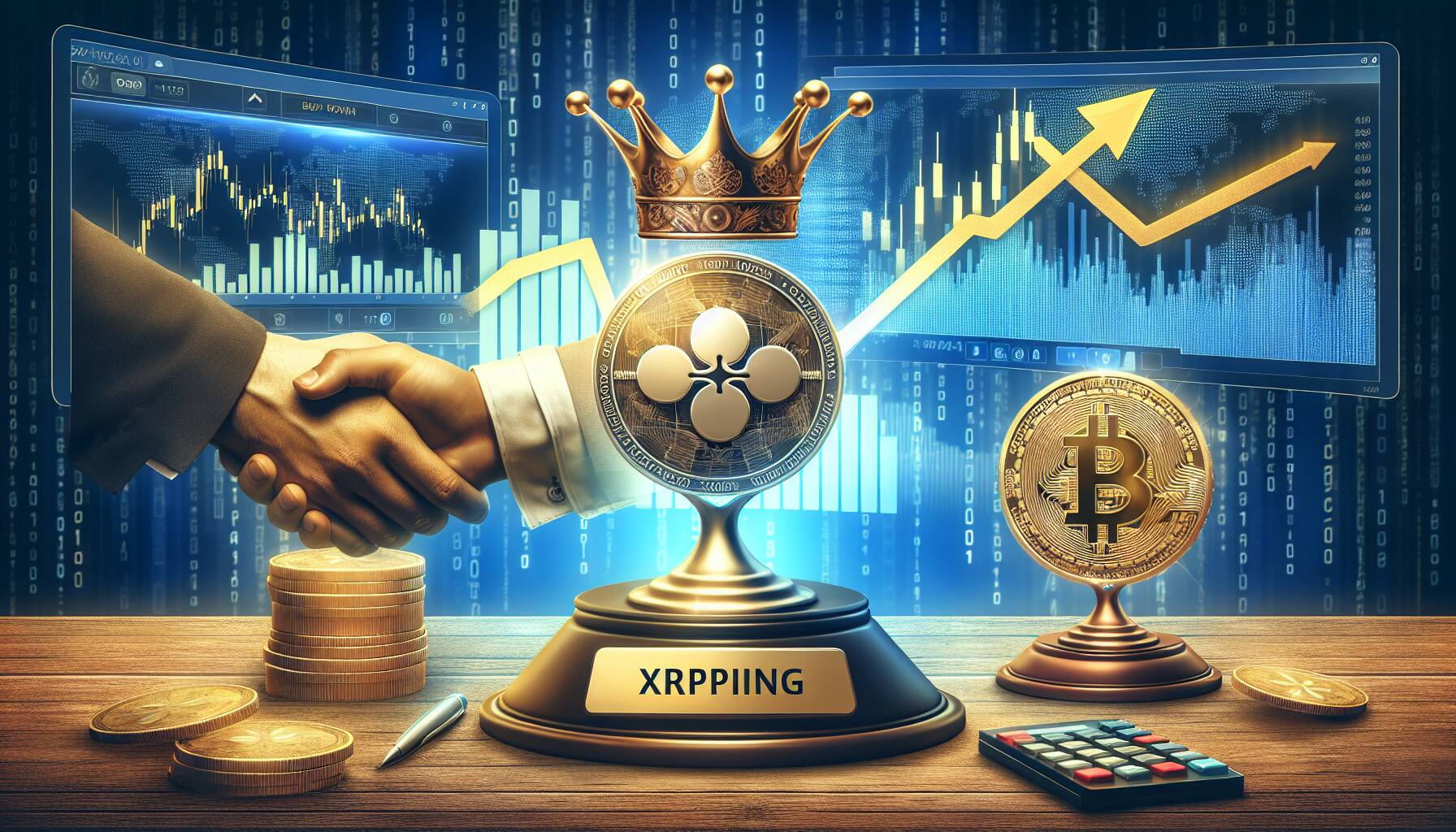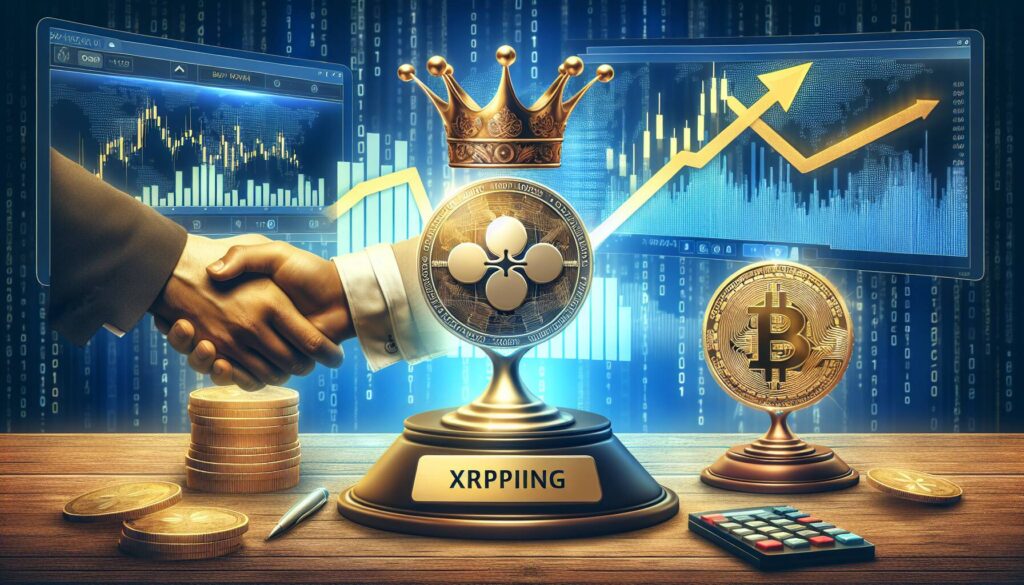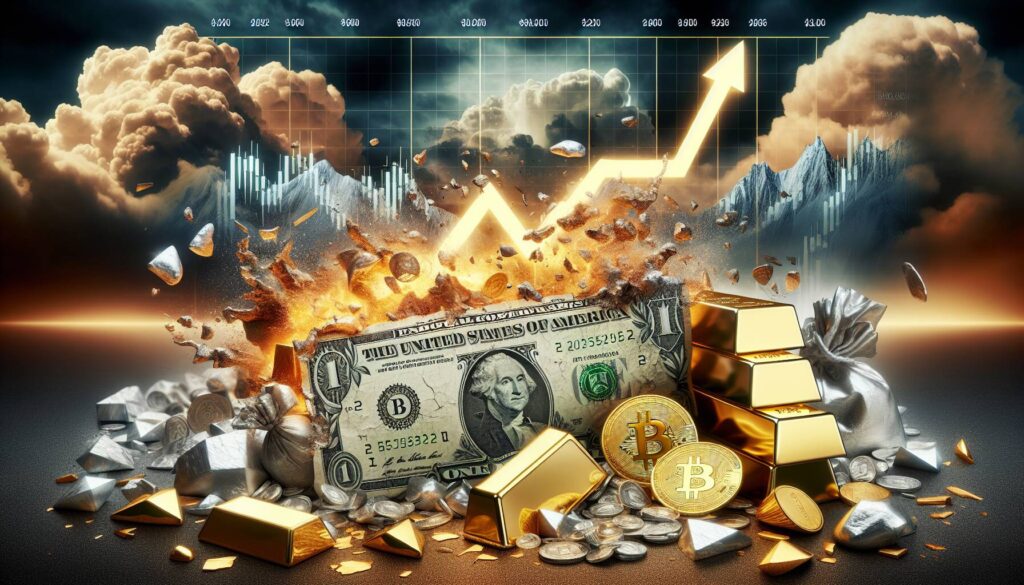XRP, the third-largest cryptocurrency by market capitalization, has recently made headlines by surpassing Bitcoin (BTC) as the most-traded digital asset on Coinbase, a major U.S.-based cryptocurrency exchange. This shift highlights a significant recovery in demand for XRP, which is closely associated with the blockchain payment network Ripple. While Bitcoin remains the frontrunner on Binance, the largest exchange globally, access to this platform is restricted for U.S. investors, making Coinbase a crucial barometer of American market interest.
Recent trends indicate a rising enthusiasm for XRP in the wake of high-profile events, including a meeting between Ripple CEO Brad Garlinghouse and U.S. President-elect Donald Trump shortly before the presidential election. The excitement has been further fueled by speculation surrounding the potential approval of a spot XRP exchange-traded fund (ETF) in the U.S., which would provide new avenues for institutional investment.
“As of now, the XRP/USD pair comprises 25% of Coinbase’s robust 24-hour trading volume, which totals .86 billion, underscoring a noteworthy shift in trading dynamics.”
In just a few months, the price of XRP has soared by over 600%, reaching .33—its highest level since 2017. This remarkable increase can be attributed not only to growing retail interest but also to record futures open interest and a surge in large holders of the cryptocurrency. Data from TradingView and CoinMetrics reveal that the number of wallets holding at least 0,000 has climbed to 108,540, indicating a strengthening confidence among investors.
As the cryptocurrency landscape evolves, XRP’s ascent as a leading digital asset on platforms like Coinbase captures an essential moment in the ongoing narrative of blockchain technology and its integration into traditional financial systems.

XRP Surpasses Bitcoin in Trading Volume on Coinbase
The recent surge in XRP’s trading volume reflects significant changes in the cryptocurrency market and U.S. investor sentiment. Here are the key points to consider:
- XRP is Now the Most-Traded Digital Asset on Coinbase:
- It replaced Bitcoin (BTC) on Coinbase, a major exchange that indicates U.S. demand for cryptocurrencies.
- Bitcoin remains the most-traded asset on Binance, the largest exchange by volume, which is not accessible to U.S. investors.
- Increased U.S. Demand for XRP:
- Volume trends suggest a recovery in interest for XRP, linked to Ripple’s blockchain payment network.
- The Coinbase premium indicator hinted at this increasing demand a week prior.
- Impact of Political Events:
- XRP gained popularity following Donald Trump’s election victory in November, increasing speculation surrounding the digital asset.
- Ripple CEO Brad Garlinghouse’s meeting with the president-elect spurred investor interest.
- Spot XRP ETF Speculation:
- There is ongoing speculation regarding the potential approval of a spot XRP exchange-traded fund (ETF) in the U.S., which could further boost demand.
- Trading Volume Metrics:
- XRP accounted for 25% of Coinbase’s 24-hour trading volume, totaling .86 billion.
- Bitcoin followed with a 20% contribution, while Ethereum (ETH) came in third.
- XRP is also the second-most traded coin on Binance, indicating its growing prominence.
- Significant Price Increase:
- Since November, XRP’s price has skyrocketed over 600% to .33, with significant growth occurring in just the past week.
- This price rally is supported by record futures open interest and an increase in large holders of XRP.
- Rise in Wealthy Investors:
- The number of unique addresses holding at least 0,000 of the cryptocurrency has risen to 108,540, reflecting increased interest from affluent investors.
This shift in trading volume and interest in XRP could have various impacts on readers, especially those investing in cryptocurrencies or considering entering the market.
XRP’s Market Surge: A Comparative Analysis with Bitcoin and Other Cryptocurrencies
The recent activities surrounding XRP have left a notable impact on the cryptocurrency landscape, particularly in how it competes with established players like Bitcoin and Ethereum. As XRP edges out Bitcoin as the most-traded asset on Coinbase, it highlights a pivotal shift in U.S. investor sentiment and market dynamics. This surge can be attributed to several factors that give XRP distinct advantages, albeit with a few potential pitfalls.
Competitive Advantages: One primary advantage for XRP is its close association with Ripple, a payment network that is increasingly recognized for its efficiency and utility in real-world transactions. As U.S. demand for cryptocurrencies rebounds, XRP appears to be capitalizing on its status as a payments-focused asset, which appeals to investors looking for practical applications of blockchain technology. Moreover, the optimism surrounding a potential spot XRP exchange-traded fund (ETF) approval has further boosted investor confidence and interest in the asset. The soaring trading volume—25% of Coinbase’s total—demonstrates a robust appetite among traders, signaling a potential long-term trend rather than a mere speculative spike.
On the flip side, disadvantages loom large for XRP, particularly given the ongoing regulatory scrutiny in the cryptocurrency sector. While XRP is thriving on one exchange, Bitcoin maintains its dominance on Binance, the largest exchange overall. This could create issues for XRP if regulatory developments or sentiment shift dramatically. Furthermore, while the price surge—over 600% since November—is impressive, it also raises concerns about sustainability and potential volatility. Such rapid gains may lead to profit-taking and increased sell-offs by investors fearing a correction—a risk that could destabilize the current momentum.
The evolving landscape suggests that investors and traders focusing on utility could benefit significantly from XRP’s rise, especially those looking to diversify their portfolios amidst rising demand for alternative cryptocurrencies. Conversely, traditional Bitcoin investors or those skeptical of the fluctuating fortunes of lesser-known coins might find themselves facing increased competition and potential obsolescence in trading volume. In summary, while XRP’s rise presents new opportunities, it also underscores the precarious balance between innovation and market stability in the dynamic world of digital assets.

















